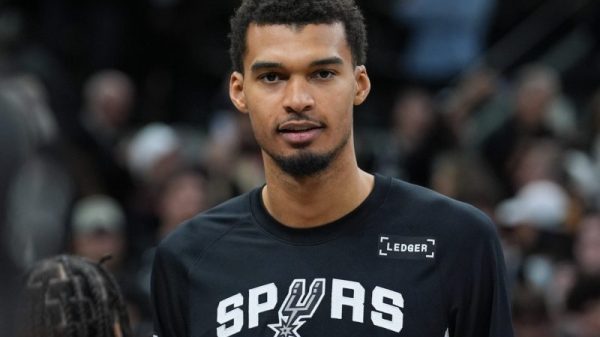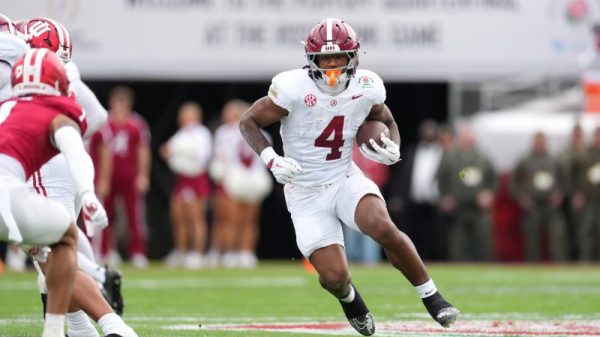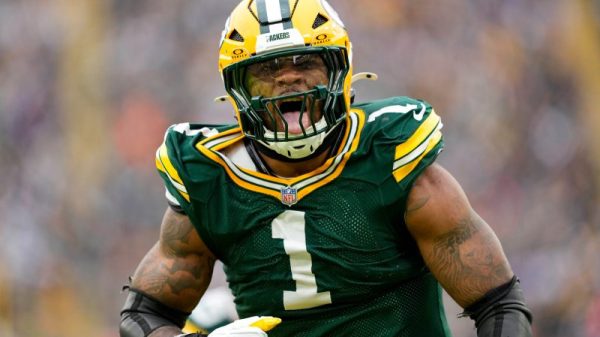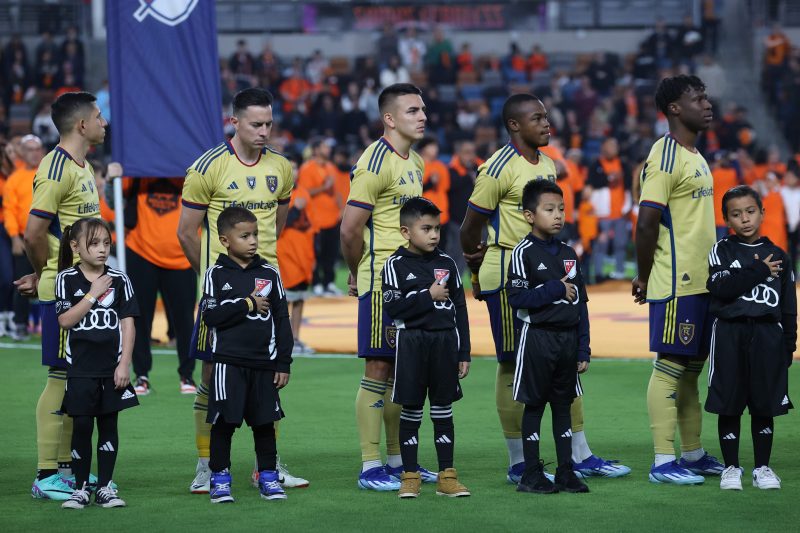Before he became a doctor, Kody Moffatt was an athletic trainer. He worked for junior and professional hockey teams, including three NHL training camps and an exhilarating San Jose Sharks playoff run. When he eventually opted for a life without the grueling travel schedule, he brought a unique perspective into a career in sports medicine.
Today, Moffatt, the division chief of pediatric sports medicine at Children’s Nebraska, has an insider’s view of youth sports. Kids, of course, aren’t professionals, but many of our young athletes are swept up in a world that treats them as such.
“For a lot of kids, it comes down to the fact that sports become less fun and more about the concept of what success is from more of an adult’s eyes than a child’s eyes,” Moffatt says. ‘Kids want to stay active, play and have fun with their friends, and winning and losing is something that they care less about.”
About 70 % of kids drop out of organized sports by age 13 and the so-called “professionalization of youth sports” can’t be understated as a significant factor why, according to a new report released Monday by the American Academy of Pediatrics (AAP).
‘The professionalization of youth sports is widely considered responsible for the high volumes of training and the pressure to specialize in a single sport that may lead to overuse injury, overtraining, and burnout in youth athletes,” write Drs. Joel Brenner and Andrew Watson, sports medicine physicians and the authors of the paper released by the AAP entitled ‘Overuse Injuries, Overtraining, and Burnout in Young Athletes.’
“In addition, the pressure to succeed at a young age, as well as the perception that this is the most efficacious route to future athletic success, further leads to high volumes of training and loss of enjoyment in sport, both of which can contribute to widespread burnout and attrition among youth athletes.”
The new paper updates a 2007 AAP report offering “considerable evidence to better define how excessive training volumes can lead to overuse injury, overtraining, impaired well-being, and decreased quality of life.”
It also gives advice for parents about how to manage these challenges in youth sports. USA TODAY Sports spoke with Brenner, who is the medical director of the sports medicine program at Children’s Hospital of The King’s Daughters in Norfolk, Virginia, and Moffatt about why so many kids are quitting sports and what parents can do about it.
1. Promote athletics to develop healthy habits, not as a means to an end
According to AAP, discontinuation of sports during childhood plays a role in the more than 75% of U.S. adolescents failing to meet physical activity recommendations.
We want our kids to play sports but we tend to obsess over it. When we do that, we miss the point of getting them into sports in the first place.
Think of his or her sports career with this perspective: It will be over some day, whether that day occurs in high school, college, the Olympics or the pros.
“But you want these kids to still be physically active, to find things that they can do and not get to the point where they’re just burned out mentally and they do not want to be physically active, which, unfortunately, is an outcome that can occur in kids,” Brenner said. “The underlying goal for sports should be to have fun and learn lifelong physical activity skills.”
The best way to ensure your child stays active is to be a partner in their discovery from the beginning. Let them try anything and everything from a young age and let them develop a love for one of them organically.
Try to play a different sport each season, even if it’s just recreationally.
“If you’re just locked into one sport at 8, let’s say, you might miss out on another sport that you would have really enjoyed even more and might have been even better at, too,” Brenner says.
COACH STEVE: When should your kid specialize in a sport?
2. Come up with an intrinsic, team-oriented definition of sports success
Parents get furious when a call goes against their kid in a game. They berate the officials and cheer loudly to help, or so they think, their kid’s team win.
But isn’t a call that goes against your kid, or a close loss, good for building overall character? Your son or daughter might even try harder, and perform better, the next game if you quietly talk to them about it instead of blaming them or someone else.
“We all learn from things that don’t go as planned,” Moffatt said. “I had an old professor who used to say, ‘You only learn from your mistakes because they hurt.’ ”
Competing in sports should derive from intrinsic motivation. If you emphasize effort and have your kid set goals related to teamwork, the winning will come more naturally. Have your baseball player focus on scoring or driving in two runs per game or your basketball, soccer or hockey player get assists.
COACH STEVE: What was legendary coach John Wooden’s definition of success? You never quite get there
3. Keep in mind playing one sport all the time might hurt you
The AAP report details how extended periods of increased training without proper recovery time can lead to overtraining syndrome, which results in decreased performance, increased risk of injury, and can even affect a child psychologically.
Brenner said he’s seen teenagers who have been doing the same sport nonstop since they were six. By this point, they’re feeling a lot of pressure, whether it’s external or internal, to succeed. Then there’s the physical toll.
The AAP recommends one day of rest per week and two to three months off from participation in any specific sport. The months don’t have to be consecutive, but whenever you can take these breaks in one-month increments during the year. Professional athletes even take time off from their sports in the offseason for strength- and cross-training.
Remember, “off” doesn’t mean sitting on the coach, but staying active another way.
“I stunned a mom a few months back,’ Moffatt said. ‘She had a talented middle school-aged baseball player and she asked me what could she do as a mom to help him succeed a baseball? She was referring to the winter months. I told her to have him play basketball, and I thought she was gonna fall off her chair, but then I explained the why. The diversity really makes a difference in building young athletes, not specialization.”
4. Watch for overuse injuries, and take care of them before they get worse
Overtraining syndrome is less common than overuse injuries to bone, muscle or tendon due to repetitive stress without enough recovery. Moffatt said he sees overuse injures almost every day, while Brenner said 50% of patients he sees have them.
Most overuse injuries last less than three weeks, according to the AAP report, but they can be season-ending, too.
“The whole goal of training is train, break it down a little bit, make it weaker,’ Moffatt said. ‘But if you break something down and you don’t allow for that recovery time, you continue to break it down, the system starts the fail, whether it’s the bone or the growth plate, and that’s where you get the injury and pain and then the disability that follows.”
Overuse injuries can manifest themselves as “dysfunction,” Brenner said, such as decreased pitch velocity in a baseball player. And be alert: Your child might be hiding it.
“Kids feel pressure,” Brenner said. “They might feel pressure from coaches, they might feel pressure form parents. They don’t want to let their teammates down, so, despite having some soreness, or wanting some time off, they continue to participate so they don’t let anybody down.”
Stress to your kids the importance of resting something if it hurts. Tell them if they have long-term goals, such as making a high school or college team, a key component must be resting an injury until it heals.
5. Use sleep and nutrition to drive performance
Brenner calls sleep “one of the most important medicines” for recovery and to fuel your performance. He’s incorporated a dietician into his sports medicine program to ensure kids get enough protein, carbohydrates, fruits, vegetables and even fats.
As far as sleep, kids need 8 to 10 hours, and most teenagers don’t get an optimal amount.
“Sleep is not just this passive state of rest,” Moffatt said. “During deep sleep, the brain and the body go into kind of this metabolic repair mode where the stuff that got broken down during the day kind of gets pruned and processed and recovers while we sleep and probably the biggest organ that applies to is the brain. Sleep is so important to the developing brain.”
6. Watch closely for signs of burnout
Burnout is one of the primary reasons for attrition in youth sports, according to the AAP.
The most common two burnout symptoms Moffatt sees are the loss of interest or motivation in a sport and sleep disturbances. Others signs include fatigue, anxiety, a lack of concentration and decreased academic and athletic performance.
“They don’t all hit at once,” Moffatt said. “The depression and anxiety tend to come later.”
Many of the goals we have already discussed – intrinsic motivation, long-term development goals, emphasizing effort over winning, getting adequate rest – can prevent and protect our kids from burnout. So can supporting them through sports, whether they have a bad game or not.
7. Always be mindful of your kid’s emotional state, especially after injury
We can help teach our kids mindfulness, which Brenner has described as purposely paying attention to one’s physical, mental, and emotional condition in a nonjudgmental manner. Mindfulness, Brenner said, helps us move on from failure, reduce the risk of injury and maintain a positive outlook when returning from an injury, especially a devastating one like an ACL tear.
“If they’re feeling stressed and overwhelmed, they can be doing different breathing exercises, for instance, to kind of help them come back to moment and try to avoid that negative self-talk that we all inherently have and try to focus more on the positive,” said Brenner, who incorporates mindfulness into medical coaching and treatment programs.
Staying mindful also means staying connected to your team. Brenner says sports medicine physicians try to never completely shut someone down. If a kid has a shoulder injury, for example, he or she can remain physically active by finding something to do with their legs or core.
8. Stay ahead of the curve with your pediatrician
Brenner and Watson recommend that your pediatrician plays an active role in your child’s sports career. Have your pre-participation exam in your medical home so your pediatrician can talk to you about how to prevent overuse injuries and answer questions regarding sports and proper training.
9. Be well-rounded (and not just with sports)
Tell your kids they’re more than just athletes. Brenner said by communicating openly with our children about sports, we can find out what the child’s motivation is to play them.
Ask your kids periodically: “Are you still enjoying it? Are you still having fun?’
If they’re not, let them know it’s OK after the season to try a different activity to take up that part of the year. Perhaps that activity is not a sport, but an art class, even as a temporary break.
“Sometimes, especially if they’re burned out or overtraining, just taking a break, having a few months off, can really refresh them both physically and mentally, and maybe they don’t want to get back to that sport but maybe they’ll pick up another sport,” Brenner said.
10. Remember: Sports are supposed to be fun.
Foster their autonomy by letting them lead the conversations (about successes and failures) in games. The goal is to take those games, and the memories and learning experiences from them, into their own lives.
“I love that term: Healthy relationship with sport,” Moffat says. “When I think about it, it’s that relationship where you’re obviously staying physically active and competing. But there’s real value in teamwork and sportsmanship and learning how to win and lose with grace – those real, less-tangible life lessons.”
Steve Borelli, aka Coach Steve, has been an editor and writer with USA TODAY since 1999. He spent 10 years coaching his two sons’ baseball and basketball teams. He and his wife, Colleen, are now loving life as sports parents for a high schooler and middle schooler. For his past columns, click here.
Got a question for Coach Steve you want answered in a future column? Email him at sborelli@usatoday.com.



























